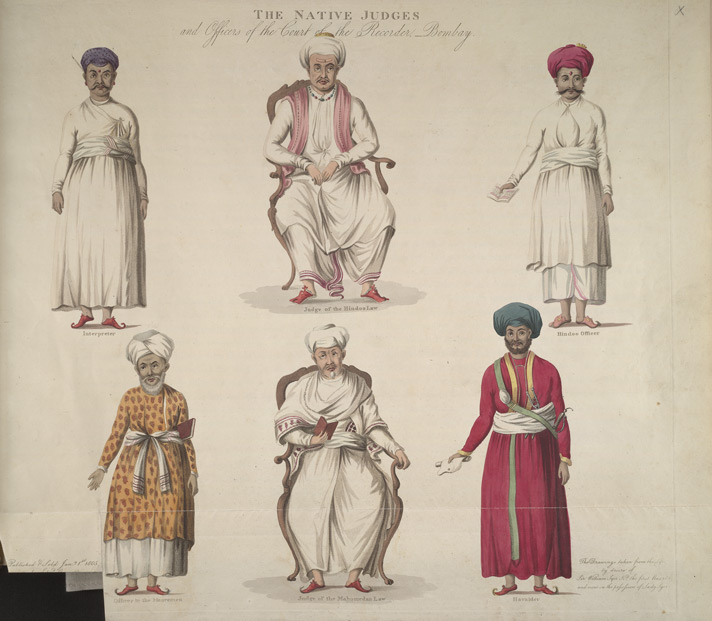|
Robes
A robe is a loose-fitting outer garment. Unlike garments described as capes or cloaks, robes usually have sleeves. The English word ''robe'' derives from Middle English ''robe'' ("garment"), borrowed from Old French ''robe'' ("booty, spoils"), itself taken from the Old Frankish">Frankish word *''rouba'' ("spoils, things stolen, clothes"), and is related to the word ''rob''. Types There are various types of robes, including: * A gown worn as part of the academic regalia of Faculty (teaching staff), faculty or students, especially for ceremonial occasions, such as a convocations, Wiktionary:congregation, congregations or graduations. * A gown worn as part of the attire of a judge or barrister. * A wide variety of long, flowing religious dress including pulpit robes and the robes worn by various types of monks. * A gown worn as part of the official dress of a peer or royalty. * Any of several women's fashions of French origin, as '' robe à l'anglaise'' (18th century), '' ... [...More Info...] [...Related Items...] OR: [Wikipedia] [Google] [Baidu] [Amazon] |
Bathrobe
A bathrobe, also known as a housecoat or a dressing gown, is a loose-fitting outer clothing, garment (a robe) worn by people, often after washing the body or around a pool. A bathrobe is considered to be very informal clothing, and is not worn with everyday clothes. A bathrobe is a dressing gown made from towelling or other absorbent fabric and may be donned while the wearer's body is wet, serving both as a towel and a body covering when there is no immediate need to fully dress. Fabrics and fibre types Fabrics Bathrobes can be categorized by the weave of their fabric: *Flannel: Flannel is a soft woven fabric, made from loosely spun yarn, usually cotton or wool. *Terrycloth: Terrycloth is a pile fabric, usually woven of cotton, with uncut loops on both sides, used for bath towels and robes. The longer and denser the loops are, the more absorbent the bathrobes are. *Velour: Velour is a pile fabric where the loops woven into the fabric have been cut. Velour bathrobes are typical ... [...More Info...] [...Related Items...] OR: [Wikipedia] [Google] [Baidu] [Amazon] |
Academic Regalia
Academic dress is a traditional form of clothing for academic settings, mainly tertiary (and sometimes secondary) education, worn mainly by those who have obtained a university degree (or similar), or hold a status that entitles them to assume them (e.g., undergraduate students at certain old universities). It is also known as academical dress, academicals, or academic regalia. Contemporarily, it is commonly seen only at graduation ceremonies, but formerly academic dress was, and to a lesser degree in many ancient universities still is, worn daily. Today, the ensembles are distinctive in some way to each institution, and generally consist of a gown (also known as a robe) with a separate hood, and usually a cap (generally either a square academic cap, a tam, or a bonnet). Academic dress is also worn by members of certain learned societies and institutions as official dress. Overview and history The academic dress found in most universities in the Commonwealth of Nations an ... [...More Info...] [...Related Items...] OR: [Wikipedia] [Google] [Baidu] [Amazon] |
Religious Dress
Religious clothing is clothing which is worn in accordance with religion, religious practice, tradition or significance to a faith group. It includes clerical clothing such as cassocks, and religious habit, robes, and other vestments. Accessories include hats, wedding ring#religion, wedding rings, crucifixes, etc. Judaism Tzitzit are specially knotted ritual fringes, or tassels worn by most Jewish men and boys during prayer. Tzitzit are attached to the four corners of the tallit (Jewish prayer shawl) and in more traditional communities are tied to all four-cornered garments. Tefillin are black leather boxes made by hand which contain written passages from the Hebrew Bible, particularly the V'ahavta and secured to the arm and head with leather straps. These have been worn for at least the last 2,000 years and originated in pre-diaspora Judaism. These are almost exclusively worn by very religious Jews during weekday prayers, and not worn outside of religious functions in order to ... [...More Info...] [...Related Items...] OR: [Wikipedia] [Google] [Baidu] [Amazon] |
Judge
A judge is a person who wiktionary:preside, presides over court proceedings, either alone or as a part of a judicial panel. In an adversarial system, the judge hears all the witnesses and any other Evidence (law), evidence presented by the barristers or solicitors of the case, assesses the credibility and arguments of the parties, and then issues a Court order, ruling in the Case law, case based on their Judicial interpretation, interpretation of the law and their own personal judgment. A judge is expected to conduct the trial impartially and, typically, in an in open court, open court. The powers, functions, method of appointment, discipline, and training of judges vary widely across different jurisdictions. In some jurisdictions, the judge's powers may be shared with a jury. In inquisitorial systems of criminal investigation, a judge might also be an examining magistrate. The presiding judge ensures that all court proceedings are lawful and orderly. Powers and functions The ult ... [...More Info...] [...Related Items...] OR: [Wikipedia] [Google] [Baidu] [Amazon] |
Wizard (fantasy)
A magician, also known as an archmage, mage, magus, magic-user, spellcaster, enchanter/enchantress, sorcerer/sorceress, warlock, witch, or wizard, is someone who uses or practices Magic in fiction, magic derived from supernatural, occult, or wikt:arcane, arcane sources. Magicians enjoy a rich history in mythology, legends, fiction, and folklore, and are common figures in works of fantasy, such as fantasy literature and role-playing games. Character archetypes People who work magic are called by several names in fantasy works, and terminology differs widely from one fantasy world to another. While derived from real-world vocabulary, the terms: ''magician'', ''mage'', ''magus'', ''enchanter/enchantress'', ''sorcerer/sorceress'', ''warlock'', ''witch'', and ''wizard'', each have different meanings depending upon context and the story in question. ''Archmage'' is used in fantasy works to indicate a powerful magician or a leader of magicians. Enchanters typically practice a type ... [...More Info...] [...Related Items...] OR: [Wikipedia] [Google] [Baidu] [Amazon] |
Monk
A monk (; from , ''monachos'', "single, solitary" via Latin ) is a man who is a member of a religious order and lives in a monastery. A monk usually lives his life in prayer and contemplation. The concept is ancient and can be seen in many religions and in philosophy across numerous cultures. The Greek word for "monk" may be applied to men or women. In English, however, "monk" is applied mainly to men, while ''nun'' is typically used for female monastics. Although the term ''monachos'' is of Christianity, Christian origin, in the English language ''monk'' tends to be used loosely also for both male and female ascetics from other religious or philosophical backgrounds. However, being generic, it is not interchangeable with terms that denote particular kinds of monk, such as cenobite, hermit, anchorite, or Hesychasm, hesychast. Traditions of Christian monasticism exist in major Christian denominations, with religious orders being present in Catholicism, Lutheranism, Oriental Ort ... [...More Info...] [...Related Items...] OR: [Wikipedia] [Google] [Baidu] [Amazon] |
Clothing
Clothing (also known as clothes, garments, dress, apparel, or attire) is any item worn on a human human body, body. Typically, clothing is made of fabrics or textiles, but over time it has included garments made from animal skin and other thin sheets of materials and natural products found in the environment, put together. The wearing of clothing is mostly restricted to human beings and is a feature of all human societies. The amount and type of clothing worn depends on gender, body type, social factors, and geographic considerations. Garments cover the body, footwear covers the feet, gloves cover the hands, while hats and headgear cover the head, and underwear covers the intimate parts. Clothing serves many purposes: it can serve as protection from the elements, rough surfaces, sharp stones, rash-causing plants, and insect bites, by providing a barrier between the skin and the environment. Clothing can insulate against cold or hot conditions, and it can provide a hygienic barrie ... [...More Info...] [...Related Items...] OR: [Wikipedia] [Google] [Baidu] [Amazon] |
Pulpit Robe
The pulpit gown, also called pulpit robe or preaching robe, is a black gown worn by Protestant ministers for preaching. It is particularly associated with Reformed churches, while also used in the Anglican, Baptist, Methodist, Lutheran, and Unitarian traditions. It is commonly called the Geneva gown, especially in Reformed churches. The garment in Lutheran churches is the talar (''talaris vestis''), also called ''priesterrock'' (priest's robe) or ''chorrock'' (choir or chancel robe). Description The gown, like academic and judicial gowns, is traditionally black, loose fitting with full length bell sleeves. It is often constructed from heavy material and features velvet facings running over the neck and down the front, mimicking the tippet or stole sometimes worn over it. In the US and other countries where this forms a part of doctoral gowns, a minister who has earned a doctorate (e.g. DD, ThD, PhD) may wear three velvet bars on each sleeve, or simply wear his academic ... [...More Info...] [...Related Items...] OR: [Wikipedia] [Google] [Baidu] [Amazon] |
Barrister
A barrister is a type of lawyer in common law jurisdiction (area), jurisdictions. Barristers mostly specialise in courtroom advocacy and litigation. Their tasks include arguing cases in courts and tribunals, drafting legal pleadings, jurisprudence, researching the law and giving legal opinions. Barristers are distinguished from solicitors and other types of lawyers (e.g. chartered legal executives) who have more direct access to clients, and may do transactional legal work. In some legal systems, including those of Anglo-Dutch law, South Africa, Stockholm Institute for Scandinavian Law#Scandinavian Law, Scandinavia, Law of Pakistan, Pakistan, Law of India, India, Law of Bangladesh, Bangladesh and the Crown Dependencies of Law of Jersey, Jersey, Guernsey#Politics, Guernsey and the Manx Law, Isle of Man, ''barrister'' is also regarded as an honorific. In a few jurisdictions barristers are usually forbidden from "conducting" litigation, and can only act on the instructions of ano ... [...More Info...] [...Related Items...] OR: [Wikipedia] [Google] [Baidu] [Amazon] |
Sleeve
A sleeve (, a word allied to '' slip'', cf. Dutch ) is the part of a garment that covers the arm, or through which the arm passes or slips. The sleeve is a characteristic of fashion seen in almost every country and time period, across a myriad of styles of dress. Styles vary from close-fitting to the arm, to relatively unfitted and wide sleeves, some with extremely wide cuffs. Long, hanging sleeves have been used variously as a type of pocket, from which the phrase "to have up one's sleeve" (to have something concealed ready to produce) comes. There are many other proverbial and metaphorical expressions associated with the sleeve, such as "to wear one's heart upon one's sleeve", and "to laugh in one's sleeve". Early Western medieval sleeves were cut straight, and underarm triangle-shaped gussets were used to provide ease of movement. In the 14th century, the rounded sleeve cap was invented, allowing a more fitted sleeve to be inserted, with ease around the sleeve head and a ... [...More Info...] [...Related Items...] OR: [Wikipedia] [Google] [Baidu] [Amazon] |
Angarkha
Angarkha is an outer robe with long sleeves which was worn by men in South Asia. By the 19th-century it had become the generally accepted attire of an educated man in public. It had evolved from the Persian cape ''balaba'' or ''chapkan'' as a result of being given a more Indian form in the late medieval or early modern era. Etymology ''Angarkha'' comes from the Sanskrit , meaning 'body-protector'.Zaira Mis, Marcel Mis (2001) Asian Costumes and Textiles: From the Bosphorus to Fujiam/ref> See also * Achkan * Dashiki * Sadri (clothing) * Sherwani * Tunic * Jama (coat) * Jodhpuri * Kurta A ''kurta'' is a loose collarless shirt or tunic worn in many regions of South Asia, (subscription required) Quote: "A loose shirt or tunic worn by men and women." Quote: "Kurta: a loose shirt without a collar, worn by women and men from South ... References {{Punjabi clothing Indian clothing Rajasthani clothing Bangladeshi clothing Nepalese clothing Pakistani clothing Punjab ... [...More Info...] [...Related Items...] OR: [Wikipedia] [Google] [Baidu] [Amazon] |
Fantasy Literature
Fantasy literature is literature set in an imaginary universe, often but not always without any locations, events, or people from the real world. Magic, the supernatural and magical creatures are common in many of these imaginary worlds. Fantasy literature may be directed at both children and adults. Fantasy is considered a genre of speculative fiction and is distinguished from the genres of science fiction and horror by the absence of scientific or macabre themes, respectively, though these may overlap. Historically, most works of fantasy were in written form, but since the 1960s, a growing segment of the genre has taken the form of fantasy films, fantasy television programs, graphic novels, video games, music and art. Many fantasy novels originally written for children and adolescents also attract an adult audience. Examples include ''Alice's Adventures in Wonderland'', the ''Harry Potter'' series, ''The Chronicles of Narnia'', and '' The Hobbit''. History Beginnings ... [...More Info...] [...Related Items...] OR: [Wikipedia] [Google] [Baidu] [Amazon] |








